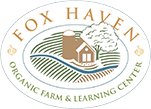News: Foraging 1: Willow, Black Walnut and Witch Hazel
Growing up, some of my favorite characters were trees. In recent years, I have been fascinated to learn more about tree’s communication methods and the way they support so much of the life around them.
After this tree identification and bark harvesting class with guide Taylor Roman, I’m ready to begin using field guides and keys from my library to identify trees in my current neighborhood.
Harvesting & Life Cycle of Trees
Spring is prime time for harvesting bark, before leaves are out and while the sap is moving in great quantities. Taylor instructed that, as you learn to time your bark harvest, you can sometimes harvest during the high sap concentration phase. This phase is known as slipping because of how easily the outer bark of the limbs can slip off.
The constituents we most often want to harvest are found in the live tissue in the cambium layer. I was surprised to learn that the cambium is made of undifferentiated cells that can become xylem or phloem cells, much like stem cells.
 Silver Maple
Silver Maple
Our tree visits began with the Silver Maple. Taylor pointed out identifying characteristics such as the redbuds, opposite configuration, and multiple trunk silhouette.
Although Sugar Maples are traditionally tapped to make maple syrup, did you know that technically any tree can be tapped? I had no idea!
You’ll have to take the foraging class to find out the surprising tree that Fox Haven has tapped the last few years.

Willow
We revisited the Willow we harvested during the last class for root propagating IBA (indolebutyric acid). This week we discussed Willow’s salicin, used specifically for headaches and other anti-inflammatory needs. Taylor noted the yellow/greenish color of the large cambium layer of new growth tips.

However, it was the distinctive leaf scar which really drew my attention as I thought, “Maybe I can remember this identification clue!”
Black Walnut
Next, we met two young Black Walnut trees near the creek bed, their deeply furrowed bark starting to form a diamond pattern.

Taylor cut two small twigs so we could observe and compare the chambered pith in Black Walnut (right) with the nearby
Tree of Heaven’s solid pith (left).
Black Walnut is known for its allelopathic juglone, exuded primarily by its roots. It has been used historically for treating parasites, eczema, and ulcers.

Hackberry
Our next bark identification example, Hackberry, calls to mind a layered 3-D topographic map!
 Sycamore
Sycamore
As we were walking, one forager classmate shared that the one tree she was always sure to identify from her time on the Potomac was the Sycamore. And lo and behold, we quickly came upon a Sycamore with its camo bark.
Taylor instructed that Sycamores are a tree we can use to assist in finding water when hiking since they are tall water-loving specimens.
 Tulip Poplar
Tulip Poplar
I recently remarked to a friend that it looked as if neighborhood Tulip Poplar trees are already budding this spring. However, Taylor soon corrected my notion. He pointed out that what I assumed were blossoming petals, high up in the straight Tulip Poplars, are actually leftover winged seedlings from last fall.
He also noted the surprising example of Tulip Poplar’s straight and quick growth habit.
The tree pictured apparently incurred a mishap, probably falling early in life, but was then cut and grew straight up out of the fallen trunk.
Witch Hazel
Our final tree visit was to a Witch Hazel, overhanging the creek bed. Witch Hazel magically blooms in winter. It has been historically called upon for its astringent qualities used for a variety of ailments, perhaps most well-known for its ability to tone skin.
 Decoctions & Organoleptics: Mystery Herb and Black Walnut
Decoctions & Organoleptics: Mystery Herb and Black Walnut
At the end of our Tree hike, we headed back into the classroom for our infusion and decoction tasting time.
First we tried the mystery herb. Its strong scent reminded me of Lemon Balm, but it was highly mucilaginous. We shared our various sensory reactions and Taylor revealed the mystery herb was Lemongrass.
He used the Organoleptics model (Hot/Cool, Dry/Wet, Tense/Lax) to note the ways we could record and visualize our herbal tastings and share with the group.
For me, Black Walnut was somewhat drying and tensing (astringent) with a slightly earthy flavor.
Tree Neighbors
The day after our class, I was thrilled to realize a prominent tree in a nearby park is a Black Walnut. I only cheated a little – park labels helped me ID it.
Now I can observe this magnificent tree throughout the coming seasons as well as the plants that are able to grow near it – despite the juglone.
I’m also excited to begin to add tree medicine, mindfully harvested, to my growing home apothecary.

Written by Charis Han-Storms
Charis is studying herbalism, foraging, and gardening under amazing teachers at Fox Haven Farm, Retreat & Learning Center, Sacred Plant Traditions, and Wild Ginger Herbal Center.
She is thankful for all the women, from a variety of traditions, who cultivated relationships with the plant world and preserved this knowledge and path for future generations. She spends an inordinate amount of time checking on seedlings, searching for new books at the library, and exploring gardens and wild places.
